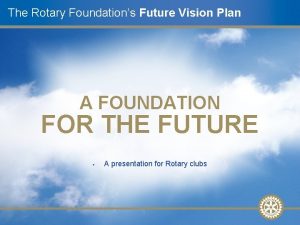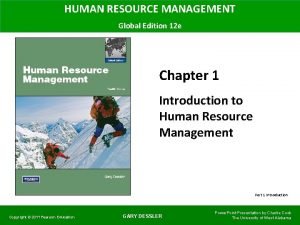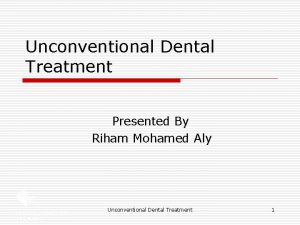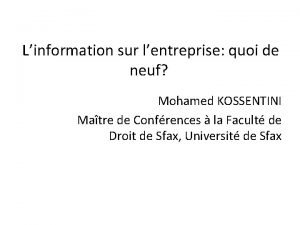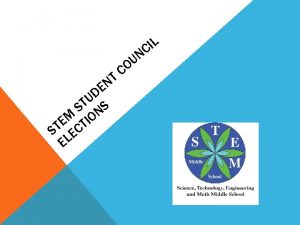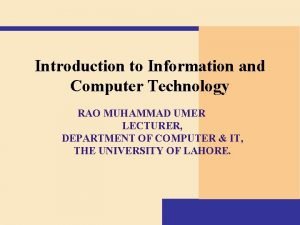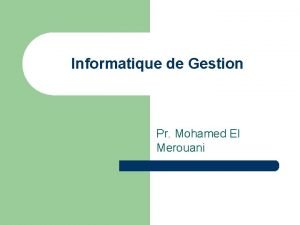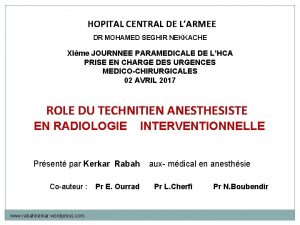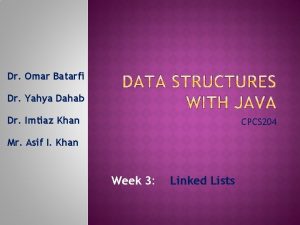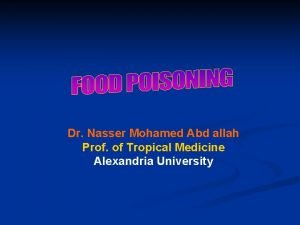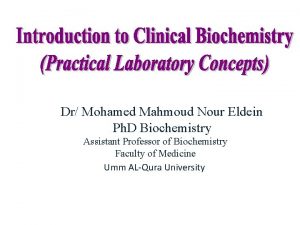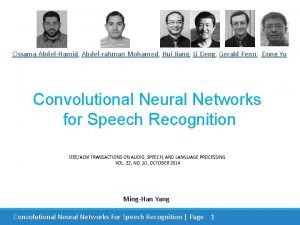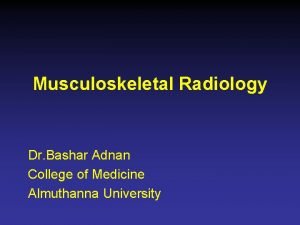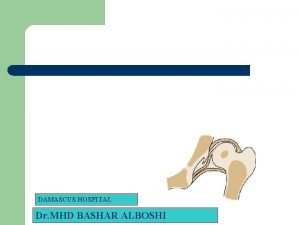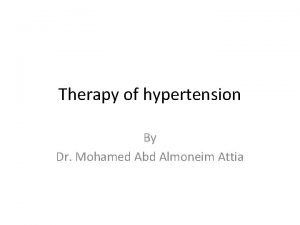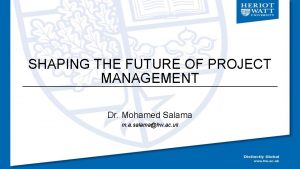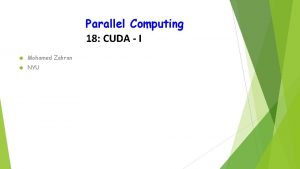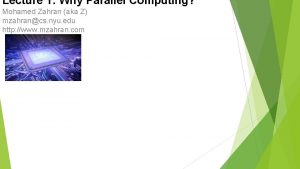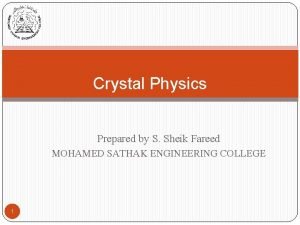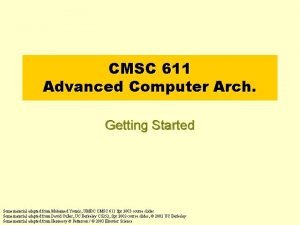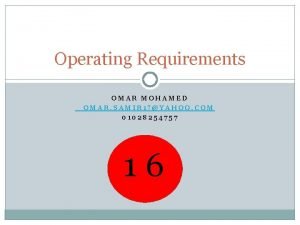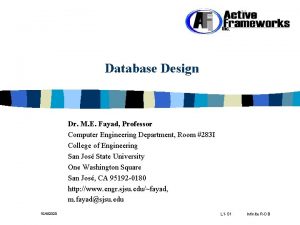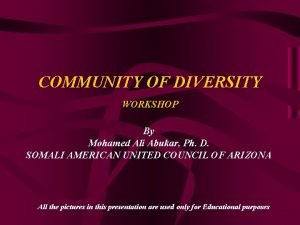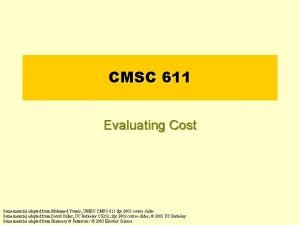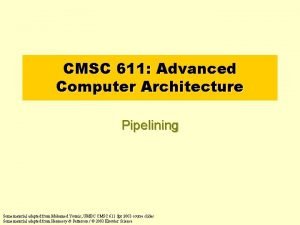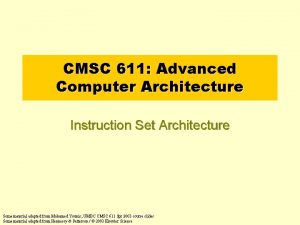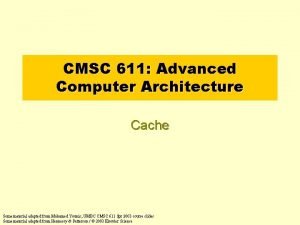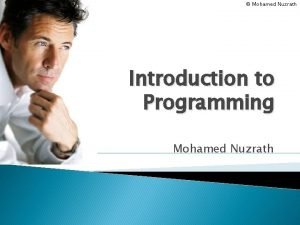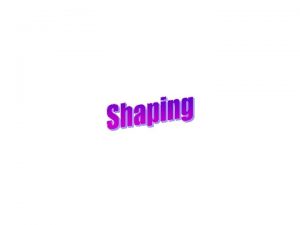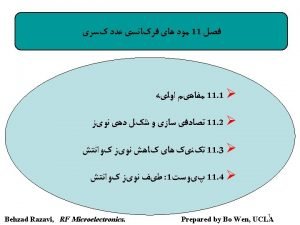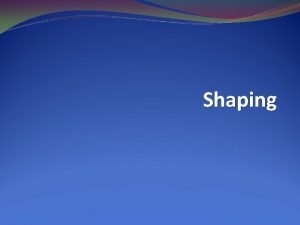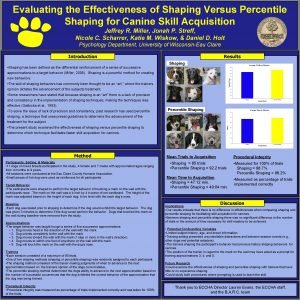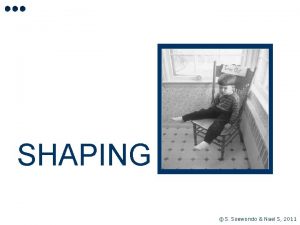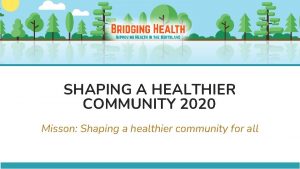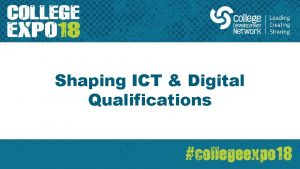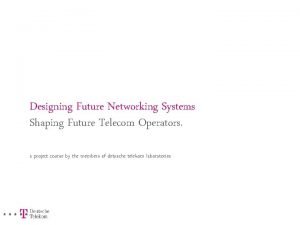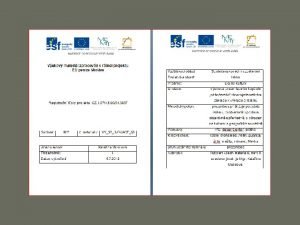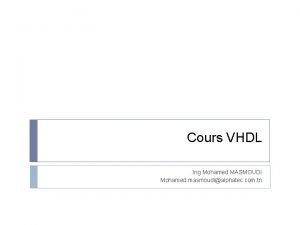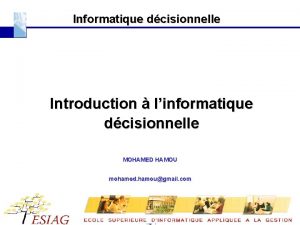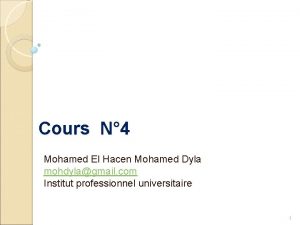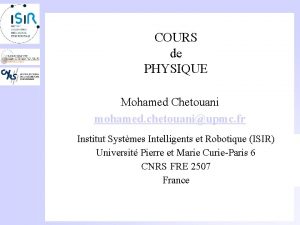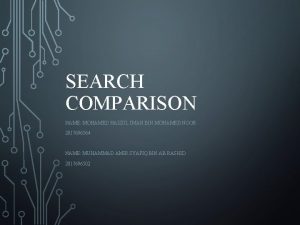SHAPING THE FUTURE OF PROJECT MANAGEMENT Dr Mohamed



















































- Slides: 51

SHAPING THE FUTURE OF PROJECT MANAGEMENT Dr. Mohamed Salama m. a. salama@hw. ac. uk

Learning Objectives Brief overview of relevant theoretical Frameworks. The evolution of Lean in Project Management context. Is Agile Project Management rooted in the Lean philosophy? Agile Project Management beyond IT projects PM in the era of Sustainability and Digital Transformation. Sustainable Project Management Model & PM Maturity

Supply chain planning and control Second tier supplier First tier supplier Supply side Information & Finance flow Physical flow Purchasing and supply management First tier customer Second tier End customer Demand side Physical distribution management Logistics Materials management Supply chain management

Pull and push philosophies of planning and control

Pull and push philosophies of planning and control Push control CENTRAL OPERATIONS, PLANNING AND CONTROL SYSTEM OR Instruction on what to make and where to send it Work centre FORECAST Work centre DEMAND

Pull and push philosophies of planning and control (Continued) Pull control Work centre Delivery Request Work centre Delivery DEMAND Delivery

Low cost – Fast response High utilization – Low TP/utilization Minimum inventory – Deployed inventory Low cost suppliers – Flexible suppliers Supply network resources Efficient Responsive Matching the supply chain with market requirements Supply Network Alignment Agile supply chain management Mismatch Lean supply chain management Mismatch Nature of demand/Market requirement Innovative products Functional products Predictable Few changes Low variety Price stable Long lead-times Low margin – – – Unpredictable Many changes High variety Price markdowns Short lead-times High margins

What is Lean? The key principle of lean synchronisation is relatively straightforward to understand, it means moving towards the elimination of all waste which in turn leads to an operation that is faster, more dependable, produces higher quality products and services and, above all, operates at low cost.

Lean Philosophy: Eliminate the 7 Wastes The lean philosophy of operations 1 - Overproduction 2 - Waiting time 3 - Transport of goods 44 - Process 5. 5 - Inventory 6. 6 - Motion: movement by people 7 7 - Defects/Faults Eliminate waste Involve everyone Lean as a set of techniques for managing operations Basic working practices Total Product Management Design for manufacture Set-up reduction Operations focus Total people involvement Small, simple machines Visibility Flow layout JIT supply Continuous improvement

Lean operations versus Traditional approach Focus on highcapacity utilisation Lean approach More stoppages because of problems More production at each stage High inventory means less chance of problems being exposed and solved Extra production goes into inventory because of continuing stoppages at earlier stages Lowercapacity utilisation, but… Focus on producing only when needed Fewer stoppages Low inventory so problems are exposed and solved …No surplus production goes into inventory

Overview of approaches to eliminate waste 1. Through streamlining the flow 2. Through matching supply and demand 3. Through flexible processes 4. Through minimising variability

What is value?

A Brief history of Value Productivity Return on investment/equity Focus Added value based on efficient use of production resources = (Value In – Value Out) / Resources Consumed Market Natural value in terms of the behaviour of supply and demand in relation to. Focus price and cost as represented by the market place… including perceived value Exchange Theory Utility Theory Systems Focus Aquino, Scouts etc, 1200 s Labour Theory Petty, Cantillon etc, 1600 s Natural Value Theory of Price Barbon, 1600 s Locke, 1600 s Theory of Supply and Demand Value System Industrialisation and wealth creation No man island! Aristotle, Socrates, etc, 4 BC Law, 1700 Smith, Mills, Marx 1700 -1800 Value Chain Porter, Evans, Rayport, etc, 1980 -2000

High Value Organisations Adapted from Livesay Financial Value Strategic Value Social Value Country GDP impact Sustainable employment Intellectual capital development Employee capability development Min. environmental impact Investor Return adjusted for risk Long term growth Adaptability Sustainability Ethical action Employees Using people at the highest level Pay, wages Funding of retirement Life long learning Opportunities for growth Personal development Social interaction Work-life balance Customer Value proposition

Customer Facing View of Value Global trends and competition Based on Bititci and Martinez

Things that each value stream needs to be good at… Develop Product Win Order Fulfil Order Support Product These are the four generic processes that underpin organisational competitiveness here and now for any organisation

Anatomy of an organisation aka the competitive business structure

What are we managing? In organisations Public, Private, Commercial, Industrial, Charitable and so on… people do things With computers, machines, materials, information, paper, other people and so on. . . that lead to results Good or bad We are managing a series of value streams and processes…!

Measuring Process Performance Effectiveness Controls Process Resources Inputs Leading indicators e. g. supplier on time delivery The extent to which the output meets specification/ requirements Leading indicators e. g. schedule adherence Outputs Efficiency Resources consumed in producing the output? Leading indicators e. g. on time delivery Lagging indicators e. g. customer satisfaction

What is Lean Project Management https: //www. youtube. com/watch? v=Eptywqps 6 lw

Agile Project Management - 12 Principles of Agile Manifesto

Aspect Traditional Project goals Concentrate on finishing the project in time, quality and Concentrate on business outcomes, and cost requirements. Project Strategy Agile realize many goals productively. Several activities to be carried out as intended to meet the A business and a procedure to realize the triple limitation (time, quality and cost). anticipated outcomes and goals for the business. Planning Executed once at the start of the assignment. Completed at starting point and reviewed when required. Managerial tactic Rigid, concentrating on the initial strategy. Flexible, adaptive, variable. Implementation Predictable, linear, measurable, simple. Unpredictable, non-linear, non- measurable, complex. Organization Impact Minimum, unbiased from the development takeoff. Project control Recognize deviances from the initial strategy, and rectify Recognize variations in the surroundings Method Use Impacts the project implementation. work to adhere to the strategy. and change the plan in view of that. Universal and equal use across all developments Method variation contingent on the kind

What is the difference between Lean and Agile https: //www. youtube. com/watch? v=a. Ud 3 x. Tdt. Xq. I

What is the difference between Scrum and Kanban? https: //www. youtube. com/watch? v=9 Jgu 1 Bl. Tl. Sc

Case Studies Based on Our Research Output Agile Project Management Beyond Software Development Projects (SPD)

Strategic Change Management: O&G PM in Nigeria • The current business environment can be described as turbulent and unstable as a result of constant changes in business development activities and efforts made by organizations to maintain competitive advantage and increase market share (Hauc and Kovac, 2000). • Organizations are compelled to formulate and implement strategies to survive (Price and Chahal, 2006). • Strategy formulation is described to be much easier than strategy implementation (Woolridge and Floyd, 1993). • Many authors have reported that most change initiatives fail (Beer and Nohria, 2000; Burnes, 2011; Kotter 1996) • According to Beer and Nohria (2000 a, p. 133) “about seventy percent of change initiatives fail.

BACKGROUND • The current dwindling oil price has had significant impact on the sector. • Oil and gas exploration and construction organizations are beginning to cut down on expenditures and carrying out redundancy exercises. • According to Zillman (2015), Schlumberger laid 9000 staff in 2015; Baker Hughes, 7000; Haliburton, 3800). • World’s leading oil and gas organizations are to undertake ambitious strategic projects in their quest for surviving in the unstable business environment (Cibin and Grant, 1996).

Gap Identification • Ideally, organizations should adopt effective project management methodologies to enable a successful change management process and to ensure strategy alignment (Asrilhant et al. , 2006). • Many authors have argued that the traditional project management practices are no longer effective in managing change projects (Beach, 2016; Henrie and Sousa-Poza, 2005; Sense, 2011). • It has been argued that the underlying theory of the traditional project management has become obsolete and outdated (Koskela and Howell, 2002). • According to (Williams, 2005), traditional project management might be inappropriate for uncertain, structurally complex and time-constrained projects, thus new methods such as agile are more likely to manage these projects better. • However, there is no evidence from the literature that this has been verified in the context of the Oil and Gas sector, particularly in Nigeria.

Objectives • To investigate the applicability of lean and agile project management practices in the management of change (strategy implementation) in the oil and gas sector in Nigeria. • To identify the key enablers and the main constraints facing the change from traditional project management to the Agile methodologies in Oil and Gas projects in Nigeria. • To verify the suitability of the Agile methodology tools and techniques to managing Oil and Gas projects in Nigeria.

Summary of literature review • Previous studies concluded that enablers of change include: effective communication, employee participation, stakeholder, clearly defined goals, top management commitment, effective project management, cross-functional high performing teams, organizational learning and flat organizational structure are enablers of strategy implementation. • In addition, the constraints facing the implementation of change include: employee resistance, ineffective project management, and lack of communication, lack of stakeholder support and lack of top management support as the constraints to effective strategy implementation (Oakland Tanner, 2007).

Summary of literature review cont . • Project Management tools and techniques are being used to implement organizational change (Cicmil & Hodgson, 2006; Williams, 2005). • It is imperative to move from the traditional methodologies (planning, monitoring, and control) to a more organic style of management (Atkinson, Crawford and Ward, 2006). • As a result of the application of project management to change management, projects with different characteristics are beginning to emerge (Hall, 2012). • Hence, the requirement for further research to cope with the nonlinear nature of these projects (Antonacooulou and Michaelides, 2014). • However, much of literature on project management focus on the tools and technique of managing projects in a traditional environment rather than how to manage projects in a dynamic environment (Beach, 2016).

Summary of literature review cont. • The traditional project management tools and techniques has been effective in executing projects in a controlled way yet fell short of exploring the deeper complexities of projects (Leybourne, 2007). • Projects are hardly predictable, and clients are usually unable to state all their requirements upfront (Hass, 2007). • In other to investigate the applicability of agile project management in other sectors, Conforto et al. (2014) presented a conceptual framework, identifying the enablers of the agile project management approach. • This included; the use of visual control, co-located high-performing teams, testdriven development, adaptive control, collaborative development, feature-driven development, leadership and collaboration rather than command control. It was suggested that applying these components to other sectors may bring about project efficiency. • These enablers were used to measure/investigate the applicability of lean and agile project management processes in managing strategic change in the oil and gas sector in Nigeria.

Methodology • A mixed method is used in this study to allow diverse viewpoints and standpoints. • Quantitative study through the distribution of a survey instrument (questionnaires). • 200 questionnaires were distributed however, only 118 responses was received. • SPSS was utilized in analyzing data collected. • Semi structured interviews were conducted with senior managers at top oil and gas organizations in Nigeria. • Detailed answers were given by the interviewees, most of the interviews were held over skype, others via phone calls.

Data Collected – Overview • Participants were asked to rate the listed enablers of strategic change implementation and the listed constraints to strategy implementation on a scale of 0 -10 with 5 as a mid-point indicating cannot decide; reflecting on own practice. • Two questions inquired about the rate of success and rate of failure of projects within the individual’s organization, using the same scale. • The third section introduced 16 variables extracted from the literature as indicators of the Agile practice and the surveyed sample were asked to rate those variables using the same scale. • The sections of the interview questions were themed into enquires on organizational change culture and structure, critical analysis of change management at the participant’s individual organizations and the suitability of different lean and agile practices to managing change projects.

Data Analysis and Interpretation of findings • A Pearson correlation analysis was carried out on the data collected • The correlation analysis indicated that effective communication, employee participation, senior management commitment, stakeholder management, clearly defined goals, effective project management, cross-functional high performing teams, organizational learning and flat/organic organizational structure were all positively correlated with project success with a significance of 0. 01. • It showed that employee resistance; lack of communication, ineffective project management, lack of stakeholder support and lack of senior management support were all positively related to project failure with a significance of 0. 01.

Data Analysis and Interpretation of findings • The majority of the new project management processes were found to be highly correlated to project success • Visual tools and aids, concurrent engineering, collocated high performing teams, last planner systems, adaptive control, feature driven development, daily project meetings, highly participative client, collocated client and project teams, total quality management, team collaboration, visual inspection and leaders as facilitators rather than control were found to be highly correlated to project success indicating that these practices are applicable in implementing strategy in the oil and gas sector • Self-managed teams and test-driven approach to development were found to be negatively correlated to project success, revealing that these practices are not applicable in implementing strategy in the oil and gas sector

Findings of Factor Analysis • The factorial analysis carried out on the lean and agile processes yielded two principal components (factors), each of the factors encompassed a group variables. • The first factor is correlated with self managed teams, adaptive control, highly participative clients, collocated project teams and leadership facilitation not control • This factor can be described as the soft factor or the people factor, as each of these variables entails the management of a project team to facilitate effective project management • The second factor is correlated with visual tools, concurrent engineering, test driven development, feature driven and quality management • This factor may be described as the Technical factor that involves engineering aspects, and the management of technical sections of a project to facilitate project success

Qualitative data analysis • A thematic analysis was carried out on the interviews data set • The findings from the interviews indicated congruence with the survey findings overall • All the participants responded positively towards the use of the lean and agile project management methodologies for managing change projects. However, self-managed teams, test driven approach to development and just in time procurement were described as not applicable to managing change projects in the oil and gas sector • Seven of the interviewees stated that the use of self-managed teams will not benefit the project suggesting that, employees will take advantage of a free work environment thus deterring productivity • All the participants responded negatively to the use of a test-driven approach to development, arguing that a test-driven approach to development will be cost and time intensive • Majority commented negatively about just in time procurement, stating that the organization should have a considerable amount of inventory

Findings • The results indicated that effective communication, employee participation, stakeholder supports, periodical reviews; change-friendly culture, senior management support, clearly defined goals, organizational learning, organic organizational structure and effective leadership are highly relevant for the successful implementation of change through projects. This is in agreement with previous studies in different contexts; Kotter (1996); (Oakland Tanner, 2007) and (Beer and Nohria, 2000). • The findings from the interviews suggested ineffective communication, lack of clearly defined goals, employee resistance, lack of stakeholder and senior management support are the most profound constraints to strategy implementation • It was gathered not all lean and agile processes are applicable in managing change projects in the oil and gas sector. However, a majority of the practices were proven to be acceptable. The survey revealed that, visual tools and aids, concurrent engineering, collocated high performing teams, last planner systems, adaptive control, feature driven development, daily project meetings, highly participative client, collocated client and project teams, total quality management, team collaboration and leaders as facilitators rather than control will improve the strategy implementation process through projects.

Main Conclusions • visual aids and tools, • total quality management, • kaban systems, • last planner system, • daily and weekly progress meetings, • high performing cross-functional teams • employee development through training But self organised teams may not work? ? 50%?

E- Learning Projects • • • Agree on an evaluation criteria, strong relationships, (Approvals) Training, managing risk, leadership skills, maintaining effective communication and flow of information flow, • managing change effectively. Type of client will determine best method?

Customized Manufacturing: A Case Study of an Italian Company • Lean Philosophy and Agile methodologies are being employed intuitively, rather than consciously. • the organization is working in a hybrid model, where it retains suitable practices from conventional and modern project management and manufacturing methodologies. Is it a spectrum? Positioning decision?

• • • Customized Manufacturing Key Findings Identifying the right process owners Relationships has to be handled very well Lack of follow through and commitment to deadlines. Customer’s attitude Reluctance to change the way that they are accustomed to doing things. • Unwillingness to make time to learn a new system or way of working. • Political / power structure • Content and approval gathering.

General Reflections on Agile Pm Beyond SDP Type of Project • • Event Management Renovation/ Refurbishment New Service Development Projects New Product development projects Construction incl. Infra-structure Projects Change Management ? ?

General Reflections cont. Internal Challenges – Resistance to Change – Awareness – Aptitude to learning and development – Resources – Perceived applicability – Org. Culture

General Reflections cont. External Factors – Client involvement – Client Org. Structure – Industry/ Sector Standards – Competitors

Conclusions on Lean & Agile • Lean and Agile can be applied beyond SDP • Lean / Agile is still in the infant stage • Lean / Agile is not a “PANACEA” • A hybrid system can be an option • Need to move forward building on the Past

PM in the Era of Sustainability and Digital Transformation Innovation Management is imperative ……. even in PM Temporary Organisations can still be exponential organisations. Innovation should be guided by MTP’s………………. 10 x Disruptive Technologies are essential tools…. . . means not ends!! Strategic Project Management …. . Programmes and Portfolios

Sustainable Project Management Model- SPMM The Model Builds on well grounded theoretical framework. All Dimensions were highlighted on previous research as critical. The model collates these factors in a meaningful matrix The model is a strategic conceptual model not a process model

S A L A M A Dimensions Factors Sustainability Dimensions – (SECE) Adaptive Leadership – AL (ASECC) 1. Social 2. Environmental 3. Cultural 4. Economic 1. 2. 3. 4. Adaptive Leadership 2. Soft Skills for teams 3. Emotional Intelligence Cultural Intelligence 5. Corporate Social Responsibility Assessment Criteria – Success Criteria o Economic Assessment o Environmental Assessment o Social o Cultural Critical Success Factors (CSF) Life Cycle Costing Benefit Realization Management Adopting Advanced Technology - AI Managing Innovation (ELESA) Assurances and Control 1. ICT 1. 4. Eco-innovation 2. Lean Startups 3. Exponential Organisation Sustainable Business Models 5. Agile Management 1. 2. 3. 4. 5. 7. 1. Scope Management OBS – WBS – TRM (RAM) – Communication Plan Stakeholder Management Schedule planning, monitoring and control Cost budgeting and Control 6. Risk Management system Quality Management System 8. Configuration Management System Project Plan review and feedback Maturity Continuous Improvement Through Agility, Lean and Life Cycle Assessment - LCA (BLAC) 4. 1. 2. AI 3. IOT 4. BCT (DLT)

Questions ? m. a. salama@hw. ac. uk
 Future perfect future continuous exercises
Future perfect future continuous exercises Future perfect simple and future continuous exercises
Future perfect simple and future continuous exercises Shaping rotary's future
Shaping rotary's future Introduction for project
Introduction for project Global trends in hrm
Global trends in hrm Riham mohamed aly
Riham mohamed aly Mohamed dahoui
Mohamed dahoui Dr elsayed mohamed
Dr elsayed mohamed Mohamed kossentini
Mohamed kossentini Mohamed homayed death
Mohamed homayed death Mohamed computer technology
Mohamed computer technology Mohamed el merouani
Mohamed el merouani Mohamed seghir nekkache
Mohamed seghir nekkache Dr mohamed bashar shala
Dr mohamed bashar shala Yahye mohamed omar
Yahye mohamed omar Dr nasser mohamed
Dr nasser mohamed Dr mohamed eldeib
Dr mohamed eldeib Mohamed
Mohamed Bouhicha
Bouhicha Abdelrahman mohamed
Abdelrahman mohamed Dr mohamed bashar shala
Dr mohamed bashar shala Dr mohamed bashar shala
Dr mohamed bashar shala Mohamed salah
Mohamed salah Zofinopril
Zofinopril Mohamed akel
Mohamed akel Mohamed akel
Mohamed akel Nyu parallel computing
Nyu parallel computing Henintsoa georges
Henintsoa georges Mohamed zahran nyu
Mohamed zahran nyu Mohamed merchant
Mohamed merchant Mohamed akel
Mohamed akel Hassan fareed physics
Hassan fareed physics Mohamed younis umbc
Mohamed younis umbc Mr mohamed chafik el idrissi
Mr mohamed chafik el idrissi Mohamed hmiden
Mohamed hmiden The site of the tree of prophet muhammad in hindi
The site of the tree of prophet muhammad in hindi Orhán
Orhán Omar requirements
Omar requirements Dr mohamed nasr
Dr mohamed nasr Accident diana spencer
Accident diana spencer Mohamed samir design
Mohamed samir design Mohamed hassoun
Mohamed hassoun The clitoris
The clitoris Mohamed fayad sjsu
Mohamed fayad sjsu Abukar mohamed
Abukar mohamed Mohamed younis umbc
Mohamed younis umbc Mohamed younis umbc
Mohamed younis umbc Mohamed younis umbc
Mohamed younis umbc Mohamed younis umbc
Mohamed younis umbc The role of project management in achieving project success
The role of project management in achieving project success Walker royce software project management
Walker royce software project management Reducing project duration examples
Reducing project duration examples


